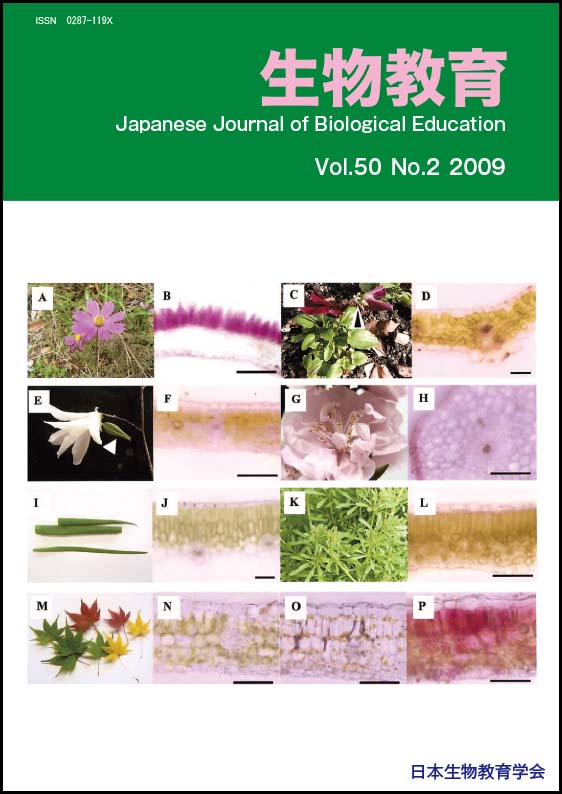
- Issue 2 Pages 52-
- Issue 1 Pages 1-
- |<
- <
- 1
- >
- >|
-
T. Takahashi, K. Murata, H. Nakayama, A. Iwasawa, K. Nakagawa-Mizuyach ...2009Volume 50Issue 2 Pages 52-60
Published: 2009
Released on J-STAGE: September 28, 2019
JOURNAL FREE ACCESSPhotographs of outward appearances of the pituitary gland were not found in the “illustration book”, which are supplementary teaching materials for biology in high schools. Among students of a medical vocational school within 1 year after graduation of the high school, 35% of them had seen the pituitary gland. That ratio was signifi cantly lower than that of students who had seen the cerebrum or the cerebellum. Ratios of students who had seen the pituitary gland in books, on TV etc., and by the real thing were lower than that of students who had seen either the cerebrum or the cerebellum. Compared with frozen rats, fresh heads and frozen heads of chickens and South African clawed frogs, a fresh head of a chicken seemed to be the most suitable for the observation of the pituitary gland by the dissection. Having observed the real pituitary gland of a chicken, the number of students whose expectation proved mistaken was more than those whose expectation proved accurate especially on the “size” of the organ. The present study suggest that the observation of the pituitary gland by the dissection may be helpful to leave a strong impression in students of the medical vocational school.
View full abstractDownload PDF (461K)
-
T. Higashihara, K. Yoshimoto2009Volume 50Issue 2 Pages 61-68
Published: 2009
Released on J-STAGE: September 28, 2019
JOURNAL FREE ACCESSHere, we evaluate a forest excursion program and a tree observation game: “What is the name of this tree?” that were conducted for senior high school students in the Kyoto University Forest by a researcher using a team teaching method. Students who had learned the characteristics of trees could observe and identify 15 tree species in the forest. Finally, the answers of the game were announced and the characteristics of the trees were explained. The students were not mere passive listeners while walking in the mountain; in fact, they actively observed the trees and participated in the game in order to score maximum marks. The students discussed what they had learning about the characteristics and identification of the trees with their peers. Students who had given an incorrect answer could identify the reason and distinguish between trees by comparing the characteristics of the observed tree with those depicted in an illustrated book.
View full abstractDownload PDF (434K)
- |<
- <
- 1
- >
- >|